Are you starting to notice lag in games that ran perfectly well before, or perhaps your graphics card is overheating, and the fans have become louder than normal? This is what we call thermal throttling, and it happens when the thermal paste on your GPU dries out. Thermal paste is an essential part of your GPU, helping it run smoothly and transferring heat away from the GPU’s processing unit.
While it is common knowledge that you should replace the thermal paste on your CPU, it is less obvious that you should do the same thing for your GPU. Your GPU, like your CPU, has a heatsink attached to it, and over time it will perform worse as the thermal paste starts to dry out. Replacing the thermal paste on your GPU can help extend the life expectancy of your card, reduce the buildup of heat, and improve your GPU’s performance while gaming.
Disclaimer before replacing thermal paste on your GPU
Before you go any further down the rabbit hole, please be aware that this process will involve you opening up your graphics card. This act, in and of itself, will void your GPU’s warranty, and you will not be able to return or replace your card in the future with the manufacturer, even if there is a manufacturer’s fault with the card itself. So, before you begin, please make sure that the card you are doing this on is past its warranty date, or be prepared to buy a new GPU if anything ever happens to the card.
Is it necessary to replace the thermal paste on your GPU
Replacing the thermal paste on your GPU is very similar to replacing your CPU’s thermal paste, albeit with a few extra screws attached. While it is recommended to replace the thermal paste on your CPU at least once a year, your GPU’s thermal paste will only need to be replaced every two years or more. Since most people are scared of opening their GPUs and don’t want to void their warranty, there are very few that would do this within the lifespan of their PC.
With that being said, you may be asking yourself if replacing your GPU’s thermal paste is necessary, and while this process does help your graphics card manage heat better, which in turn will offer you better performance in-game, the difference is marginal and, unless you are trying to push every frame out of a game, it is not necessary for the majority of gamers.
Why do you need to replace the thermal paste on your GPU

Thermal paste is used to help transfer heat from hardware to heatsinks. A heatsink is a large metal block that usually has multiple sheets of metal and an attached fan that helps evenly spread and dissipate the heat from your hardware. There are two main pieces of hardware that need heatsinks attached, your CPU and your GPU and that is where thermal paste will be used.
Over the years, as you use your computer more often, the thermal paste will become weaker and will transfer less heat to the heatsink. This in turn will raise the temperature of your hardware, making it work harder for the same result. While tests show that actively using your computer for 1–3 years without changing your thermal paste will raise your GPU’s temperature by one or two degrees at most. This is not enough for it to perform noticeably less and is within the normal parameters set by the manufacturers.
How much thermal paste should you use and how to apply it
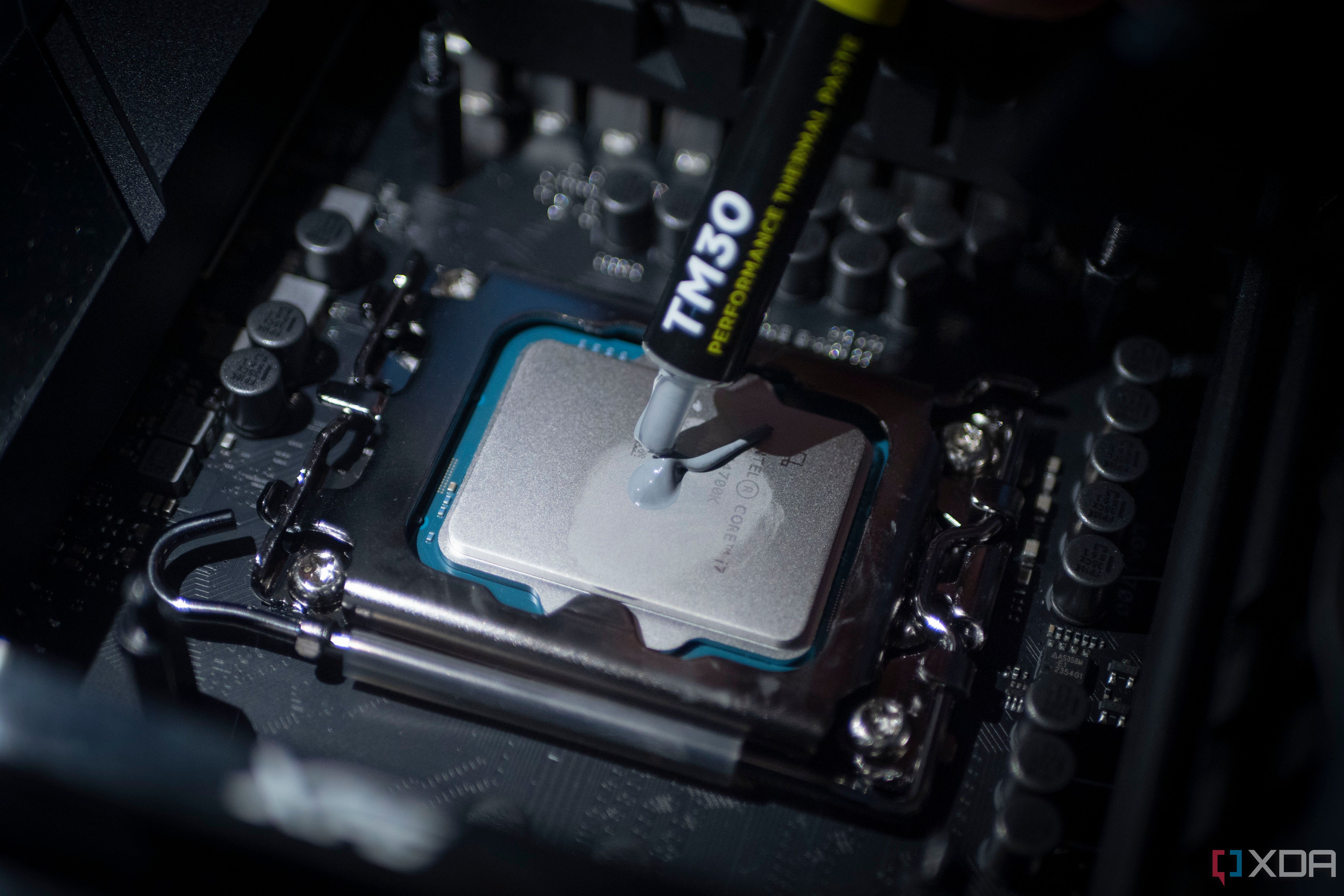
A general rule of thumb when applying thermal paste is that you should only use 0.1 ml of thermal paste or about the size of a pea. When applying thermal paste to your hardware there are two main approaches to take.
The first method is to add the thermal paste to the GPU and press the heatsink against it, causing the thermal paste to spread evenly under the pressure. The second method is to apply the thermal paste to the bottom of the heatsink, spread it evenly, and apply the heatsink to the top of the GPU.
Do not apply thermal paste to both sides, as this will be too much. In this scenario, more is not better, and if there is too much thermal paste the GPU will have a harder time transferring heat and will start to overheat. After applying the thermal paste, gently press the heatsink to the GPU and hold it there for a few minutes for the paste to harden in place.
How to apply thermal paste to a GPU
We will use a GTX 660 TI Boost for this example, but the steps will be the same for your graphics card. With a newer card, you will have more than one fan power cable, and you will probably have to use less thermal paste than on this card. With that said, let’s re-apply thermal paste to a graphics card.
- Unplug your PCIE 6-pin power cable from the GPU.
- Un-dock the graphics card and place it on a non-static surface.
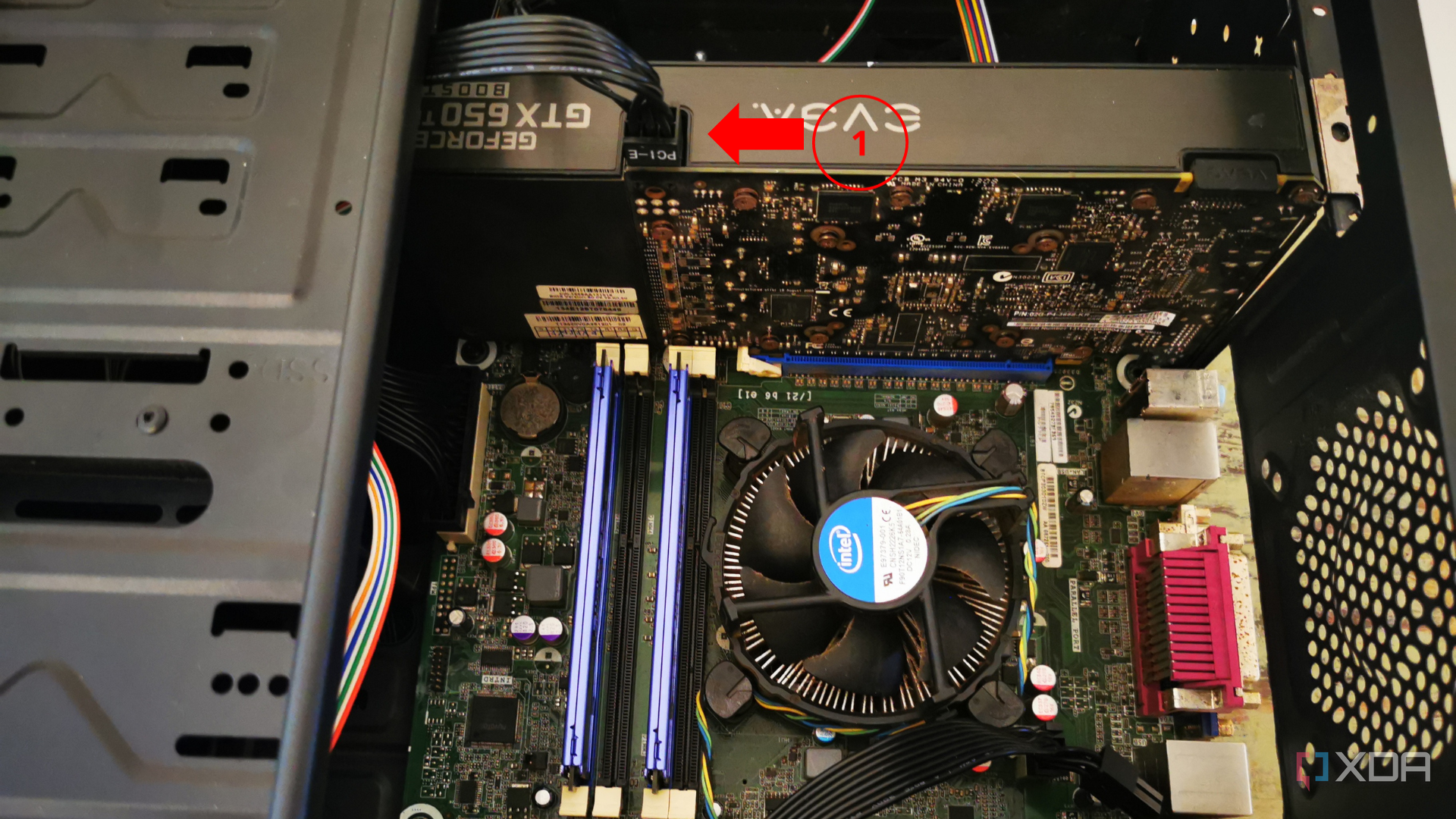
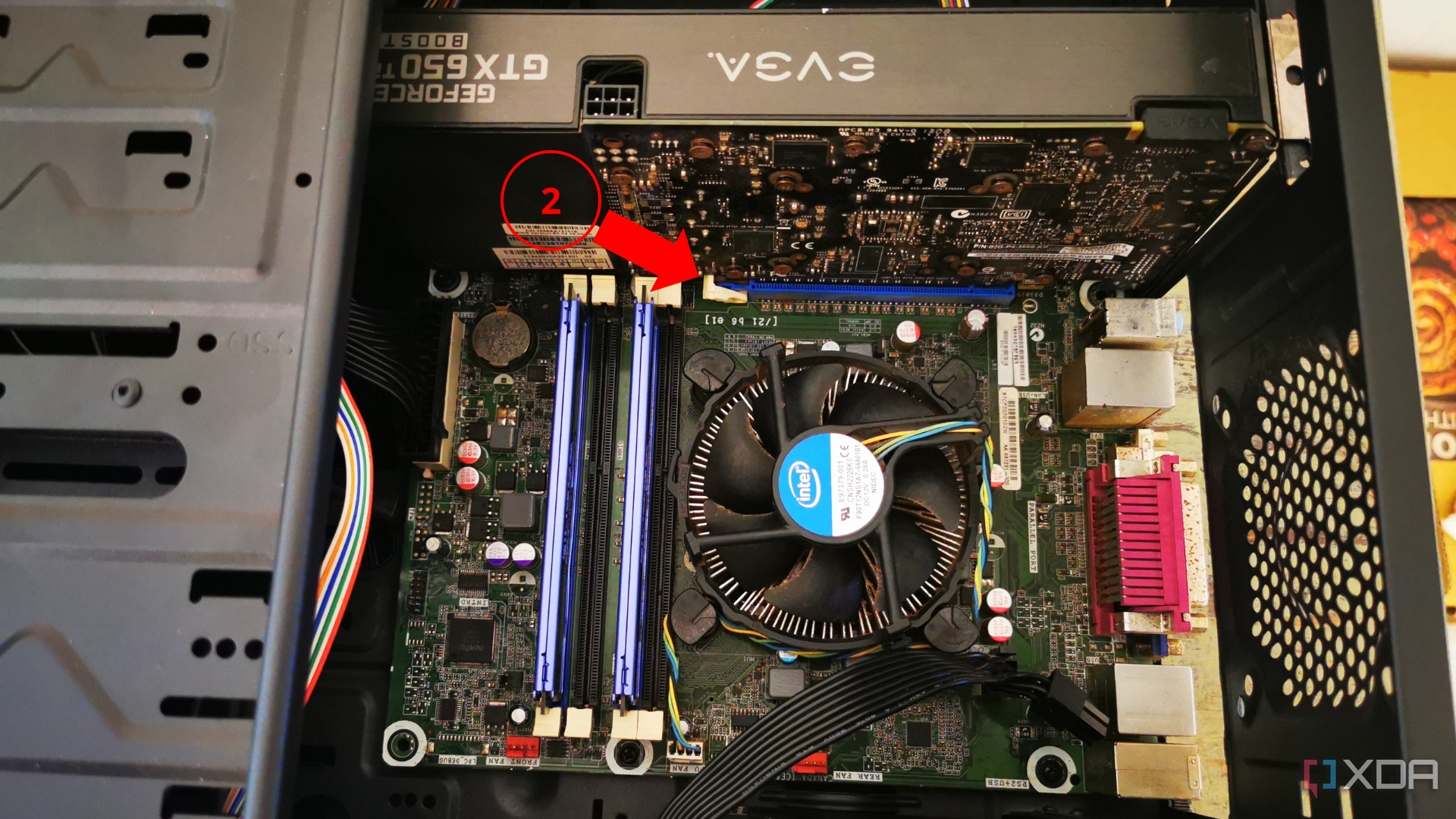
- Unscrew the back panel of the graphics card.
- Unplug the fan power cable and separate the GPU from its heatsink.
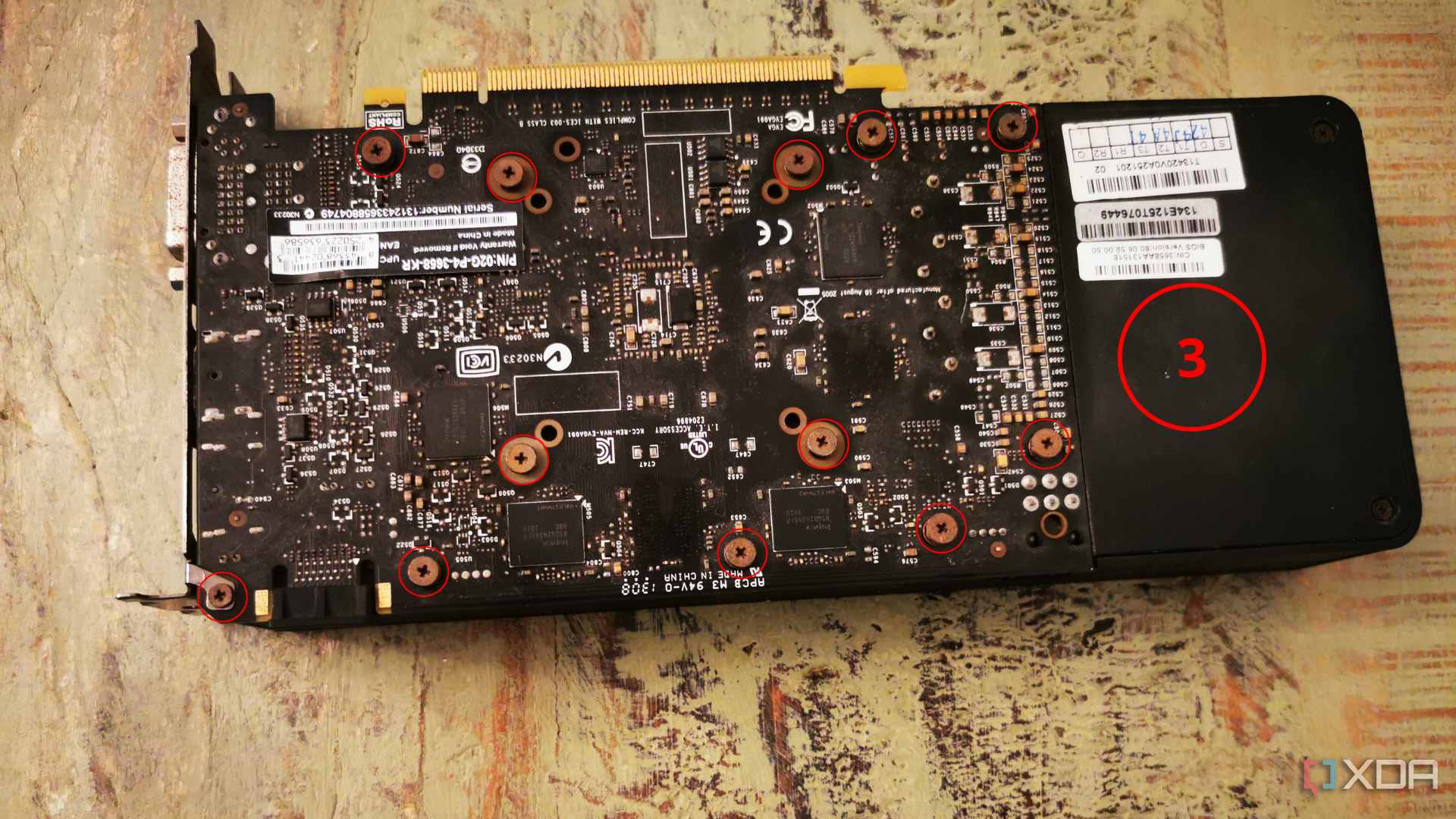
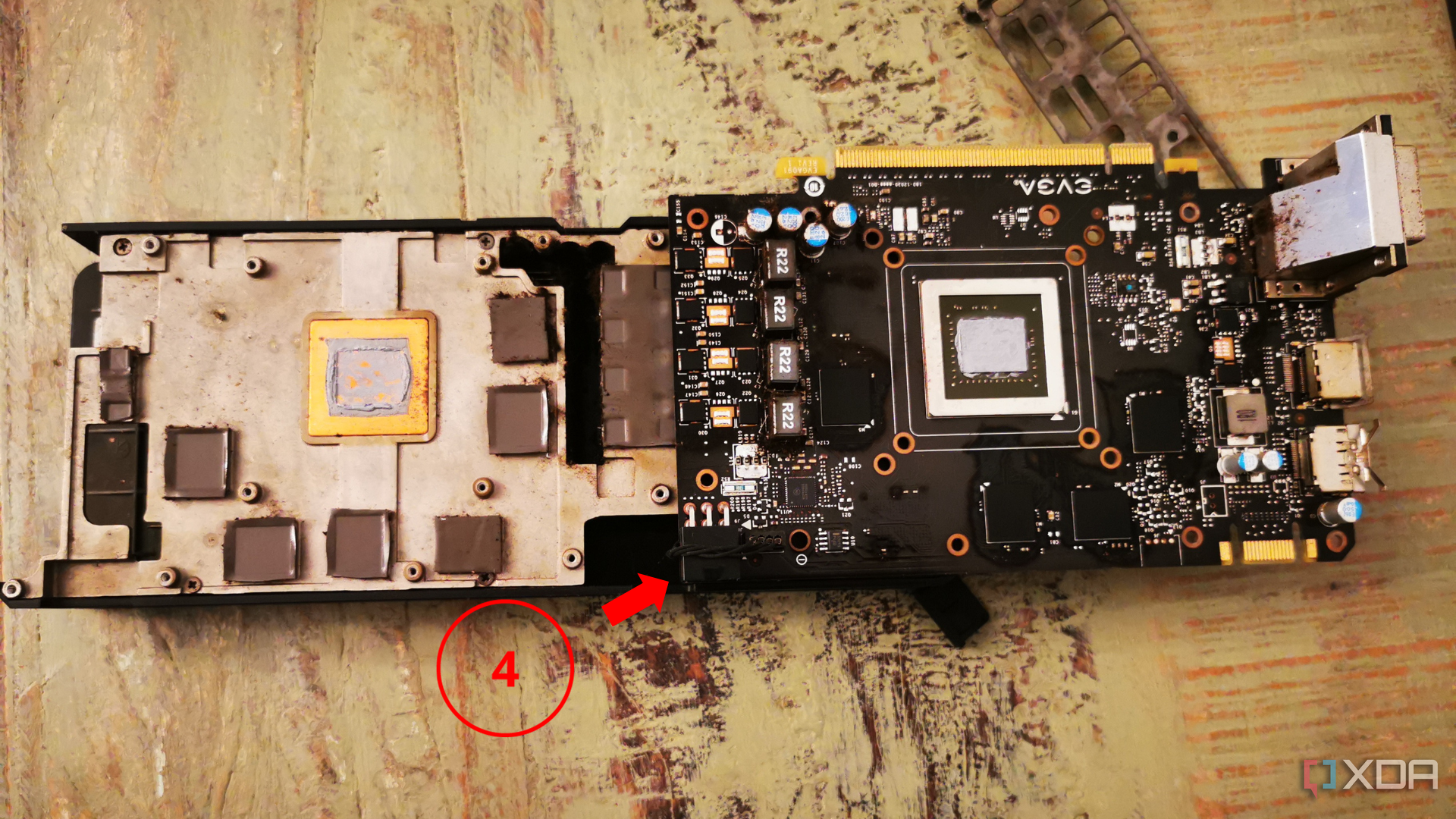
- Clean off the old thermal paste from the GPU’s processor and the heatsink.
- Apply new thermal paste to the graphics card, using one of the methods stated above.
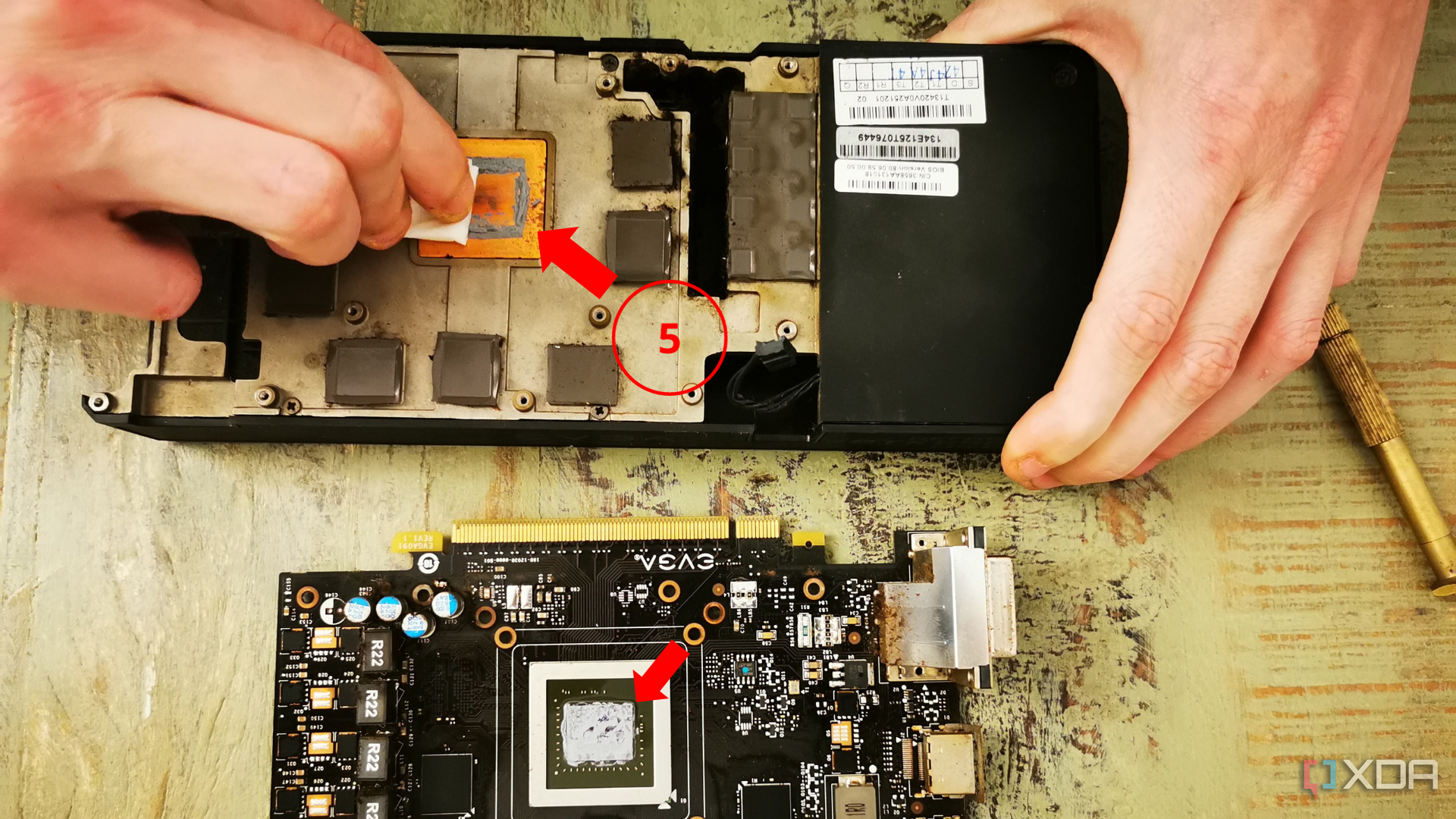
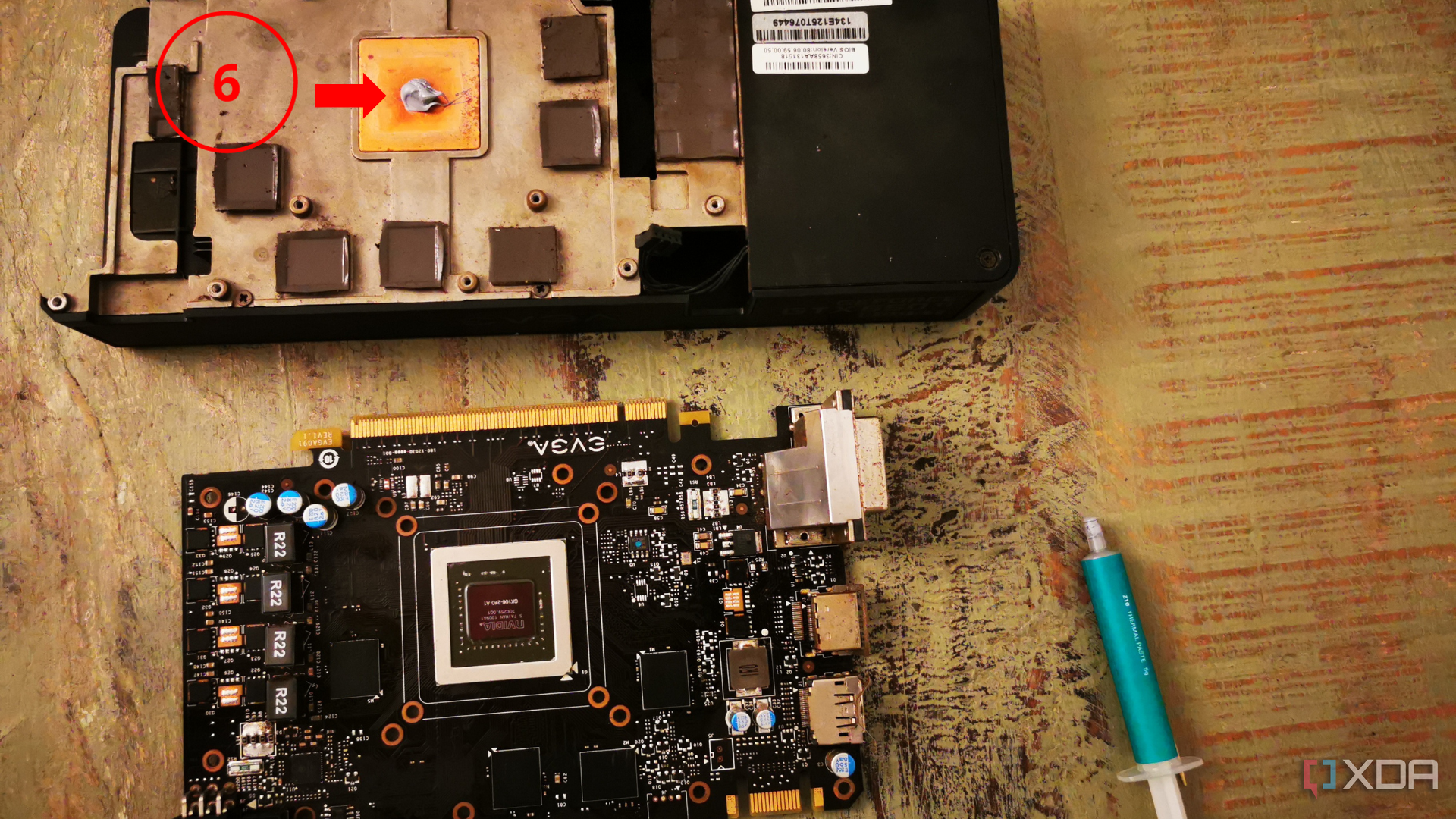
- Plug in the GPU’s fan and attach the heatsink to the GPU, then apply gentle pressure. (Makes sure the screw holes on the GPU and heatsink line up)
- Screw in the back panel to reassemble the GPU.

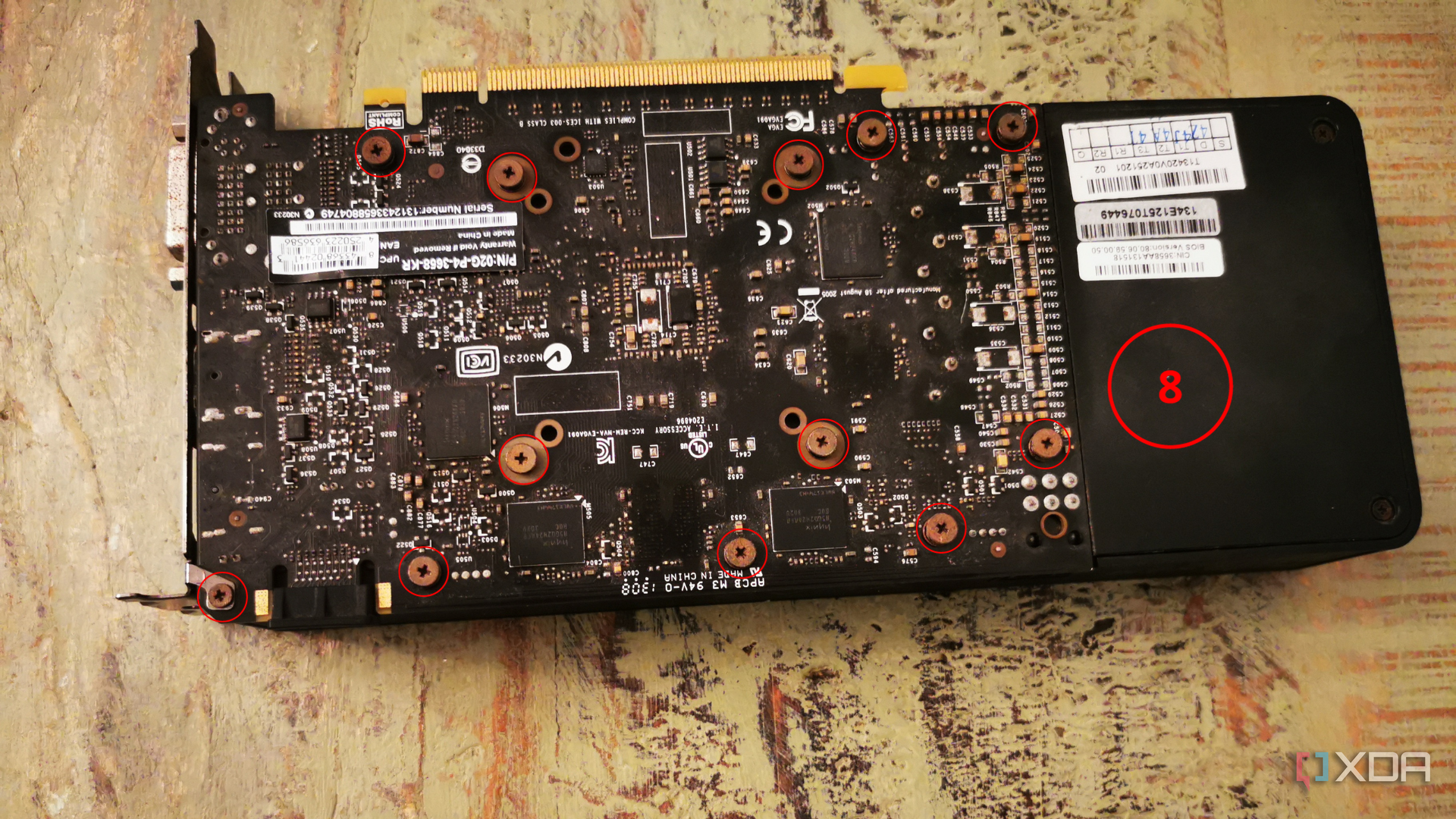
- Dock the graphics card on the motherboard.
- Plug the PCIE power cable into the GPU.
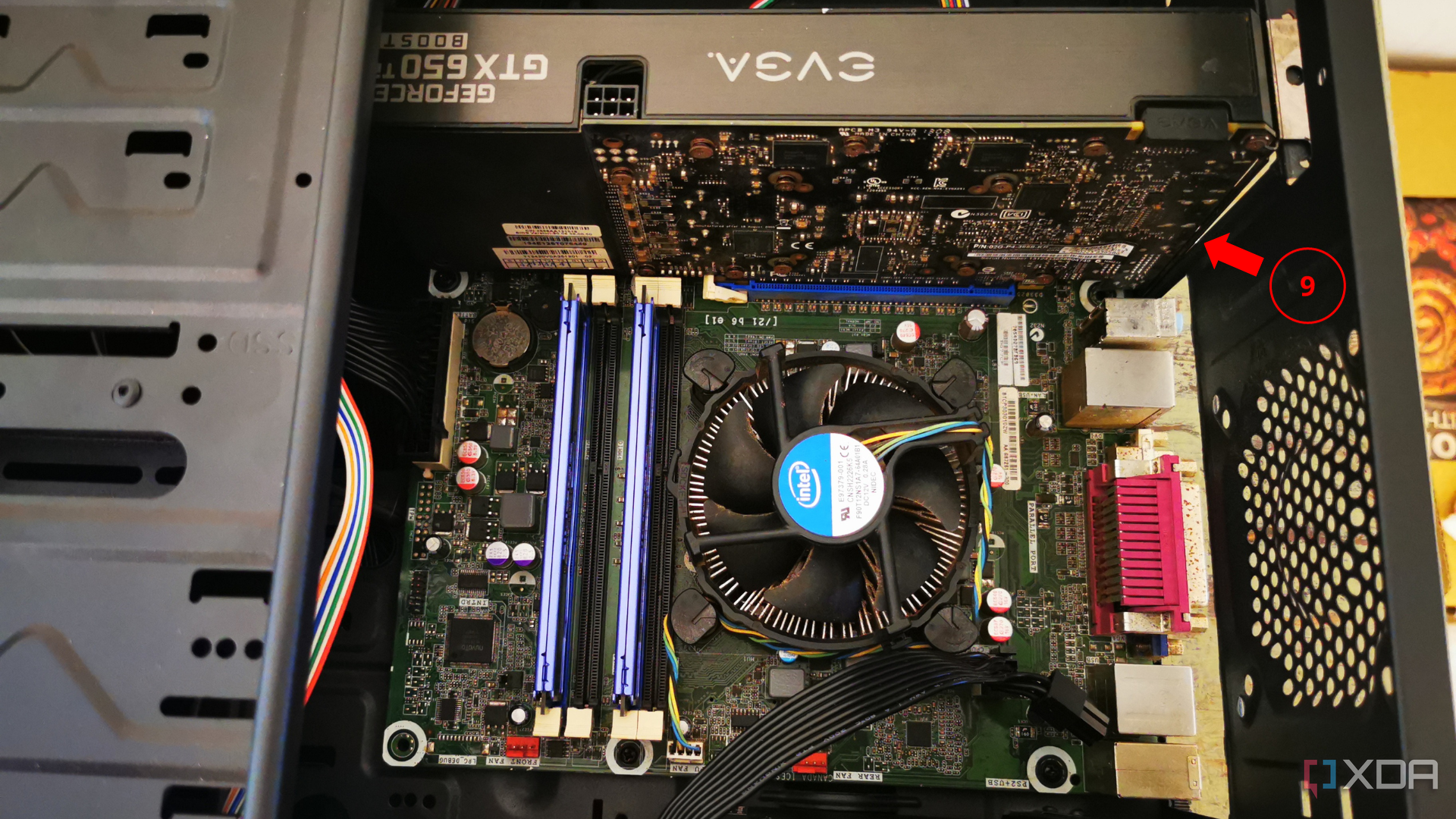

Should you replace the thermal paste on your GPU?
Your GPU, similar to your CPU, creates a lot of heat when it is running, especially if you are gaming on it. Over time, if you don’t replace the thermal paste, the GPU will transfer less heat to the heatsink, and it will result in worse performance and overheating. If your computer occasionally turns off when you are running high-resource tasks, then this is an indication that you should replace the thermal paste immediately (on both your CPU and GPU).
Otherwise, there are few gamers who replace the thermal paste on their CPU regularly, let alone replace the thermal paste on their GPU at all. But, if you are the type of person that has a very expensive machine, or you just want your PC to run at peak performance, then it is recommended to replace the thermal paste on your GPU every one to two years on average.
** (Disclaimer: This video content is intended for educational and informational purposes only) **
More...

